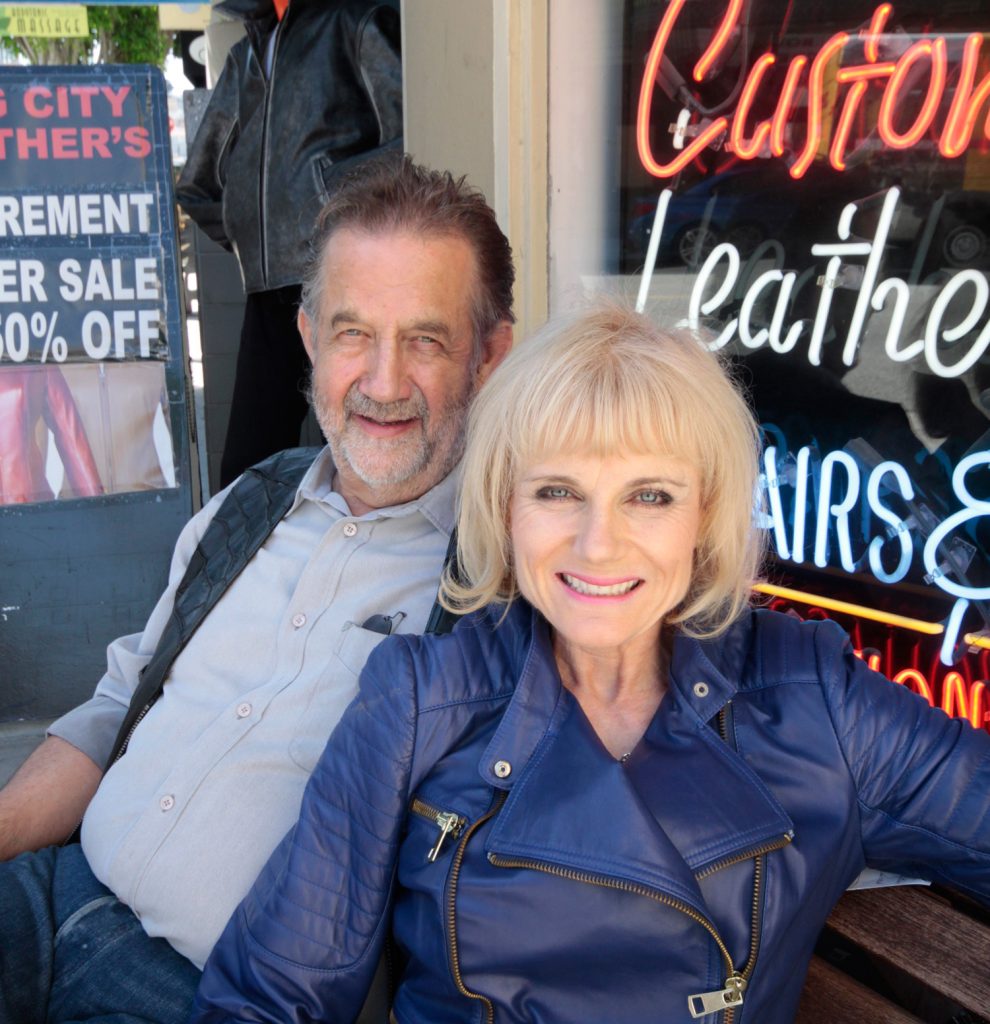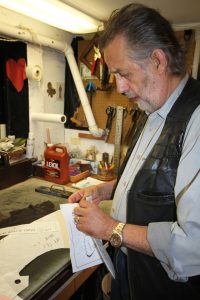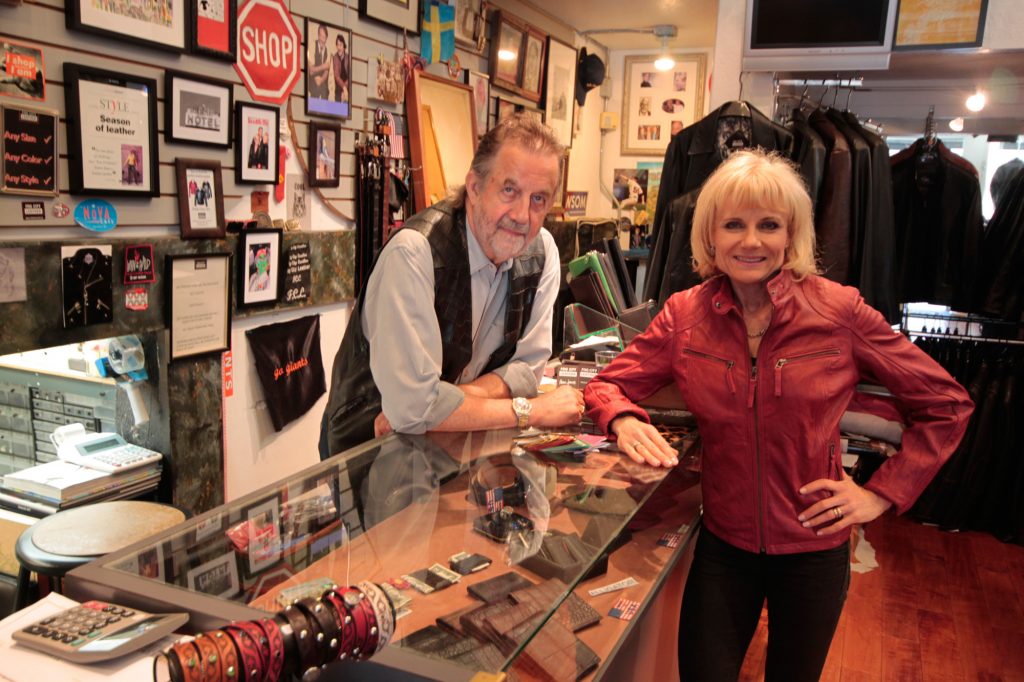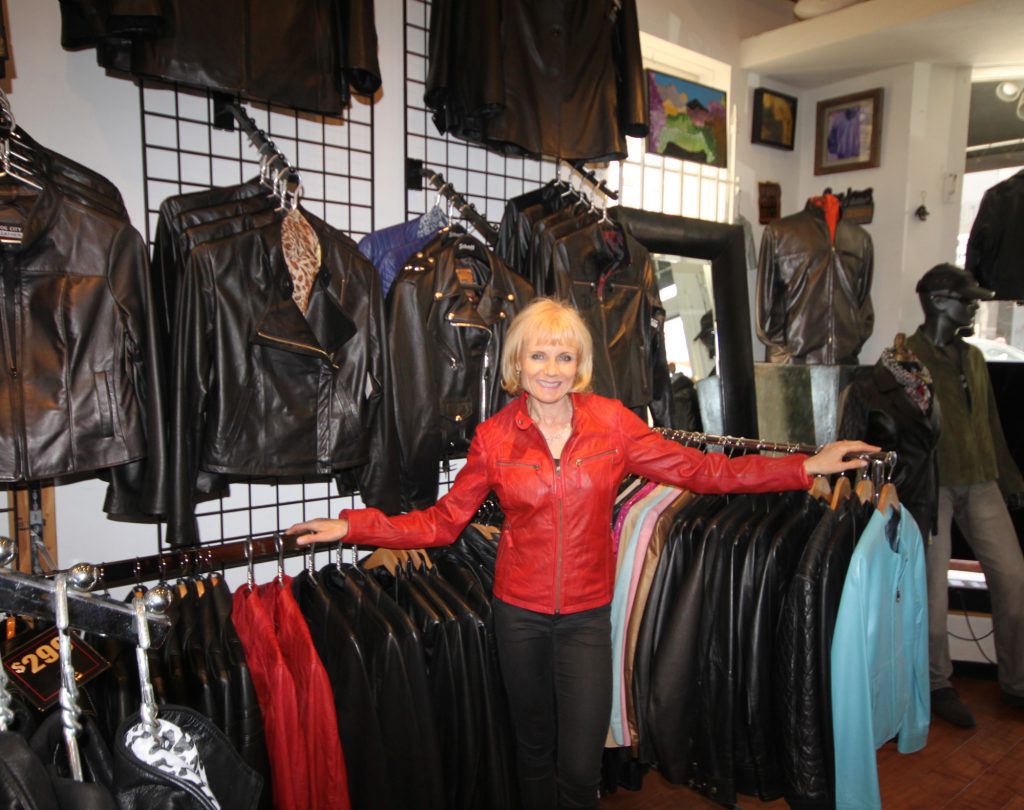By Barbara Kate Repa
PETER JAMES STILL REMEMBERS when he got smitten by leather. He was about 10 years old, living in San Francisco, having immigrated with his family from Sweden four years earlier.
“I sat in my dad’s new 1955 Studebaker, and when I shut the door I was instantly intoxicated with the leather aroma,” he says. “It just knocked me out. It had black and white checkerboard upholstery — and it hit me like a thunderbolt. I was hooked.”
Becoming an artisan and a leathercrafter wasn’t on his radar screen back then, growing up in a family where the mantra repeated each night at dinner was: “Be willing to work a little harder.”
His mother was a gourmet cook, his father an accomplished architect who collected art and drove cool cars — always fast, two-door, sporty models that were thrilling, but a tight fit on frequent family road trips. The walls in the family home were overflowing with paintings and music was in the air. Early on his brother and sister mastered guitar and piano, while he played along on bongos.
“Trying to figure out how I fit in to all of that was challenging,” he says. “I had few artistic skills — and the bongos were as far as I went with the music.”
For cash, he dabbled at being a babysitter, newspaper carrier, gardener and window washer. He also earned a merit badge in leatherwork in Boy Scouts — and still keeps a yellowed copy of the Scouts’ leathermaking manual in his shop. “But it never occurred to me that I could make a living doing leather,” he says.
James served on active duty in the Coast Guard from ’64 to ’68. “It was pretty good duty, with Vietnam in full swing and many brothers going down over there,” he says. He did sea duty on a cutter in San Francisco bay, with time off for jazz in North Beach, Janis Joplin at the Matrix on Fillmore and Jimi Hendrix at the Fillmore Auditorium. Then radio school in Groton, Connecticut, brought weekends in New York City’s Greenwich Village that were flowing with jazz, rock and beer. “And no one was shooting at me,” he adds.
While he was in the Coast Guard, his father gave him a prescient gift: a deer suede blazer he’d bought for $250 but never worn. “I broke it in and wore it during the Haight-Ashbury days,” James says. I also bought an olive green lamb suede Nehru-style jacket — and suddenly I realized: chick magnet! I would get touched by strangers because my jackets were so yummy looking and feeling.”
His entrepreneurial mojo was beginning to rise. With newfound riches from a stint selling an exercise contraption advertised on TV, James opened his first leather store — a sandal shop — in Castro Valley in 1970. It was there he learned to cut, dye and shape leather and then fit, pattern, cobble, glue and sand the edges of the sandals. “It was dirty, dusty work,” he says, “But I was becoming a craftsman and a business owner. I was off and running.”
Later that year he opened another shop — this one in Berkeley at a time and place when demand for custom sandals was skyrocketing.
“It was the 13th sandal shop in town, and it was happening,” he says. In addition to being one of the first shops to offer sandals with heels, he was able to set his operation apart from the crowd by promising fast delivery — three days instead of three weeks, made possible by the innovation of using a nail gun — plus jaunty styles and colors and experienced workers on the premises. He opened early, closed late and delivered what was promised — on time or even sooner. His work ethic had been implanted early on.
“From the get-go, I would hear horror stories about how flaky the sandalmakers were — that people would show up for appointments and often the stores were closed,” he says. “What would happen is the craftsperson would make a fast $30 or $40 and close at 2 p.m., go pick up a jug of red mountain wine for $3 a gallon and it was party time.”
While James adhered to a strict business code, work was also play. He recalls a typical workday in The Sandalmakers, a leather shop he opened in Los Gatos: “We always had great rock ’n’ roll playing and the sound of the nail gun popping, the sander sanding. Keeping up with the madness was just such a blast, it was intoxicating. A leather shop in action was pretty cool.”
It was also becoming lucrative, enabling him to lease a new Porsche and then a Dino Ferrari, two of many fast cars he’s had over the years.
In the ’60s and afterward, leather found its place in San Francisco, where it’s always leather weather.
“Lots of crafts and back-to-nature attitudes had developed, and leather was one of them,” says James, noting that more than a dozen tanneries flourished in the Bay Area, each offering its own style. And a sudden run of Hollywood films flaunted leather jackets as hot fashion items.
Then Pier 39 came along. The developers approached James about opening a shop there to complement the booming North Beach Leather. “They wanted another shop that was a bit more mom and pop, crafty, local, happening,” he says. “Apparently, more than 30 leather shops applied — it looked like a gold mine. But they wanted us because we had shown we were professionals, not just jumping on the hot leather bandwagon.” That shop opened and ran great guns until the 1989 earthquake.
All totaled, James has created 14 leather operations in various parts of California over his 44 years in the business. He opened the current spot on Union Street in 1989.
“I always liked Union Street,” James says. “It was appealing as a neighborhood — and there was lots of music close by on Fillmore.”
He also had another motive. After a divorce and 10 years as a single man, he was taken by the Union Street’s slogan at the time: “Let’s meet on Union Street.”
And it proved to be true. Into the shop one day walked a young woman in search of a custom leather jacket. It was serendipity. They discovered they were born in same city in Sweden: Gothenburg. She began to help out in the shop on weekends and proved to be a natural at retailing, with a mind and eye for design. Susanne Carlson became Susanne Rundberg — his full name is Peter James Rundberg — and they have been married for 23 years, working side by side at the shop for most of that time. They keep a crew of tailors on hand for custom orders and repairs.
They’ve seen big changes on Union Street: higher rents, fewer independents, more corporate shops and more services than merchandise.
The leather industry has changed, too — a shift that began when their favorite competitor, North Beach Leather, went out of business in 2002. Quick and cheap production in China, India and Pakistan has undercut the U.S. market as material and labor costs here have continued to climb.
While there is still a loyal Fog City cohort of locals and tourists, more customers are opting to have their old jackets refurbished rather than buy new ones.
“People dress so casually now. The new fashion is yoga pants,” notes Rundberg. “And the tech kids aren’t into leather; they’re wearing T-shirts and jeans. They’re not necessarily going to by a leather jacket.”
More change is coming. “We’ve had a dream of a landlord here for the last 25 years,” says Peter James. “She even gave us a break in rent for the last six years — and we always paid on time.”
But the longtime owner of Fog City’s commercial condo at 2060 Union Street died last year at age 96, and her heirs have put it up for sale. When that happens, James expects the new owners will double the rent and Fog City will have 90 days to move out.
“We’re still in a situation of mystery,” he acknowledges. “We know we’re moving, but we don’t know when.”
They’re not sure what’s next after the sale of the building goes through.
“I can’t really ever see hanging up the shears,” says James, who adds that Fog City will continue online after the store closes. “That will be a big change for us because we’re so customer-oriented. We like to talk to people about the skins and colors and exact sizes,” he says. “The only other thing I’ve thought about doing is custom cars. I could create a small collection, and then …”
Filed under: Locals, Retail Report









